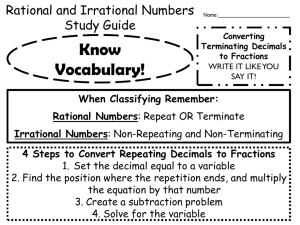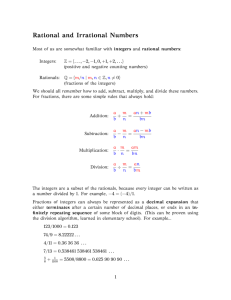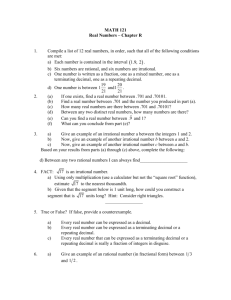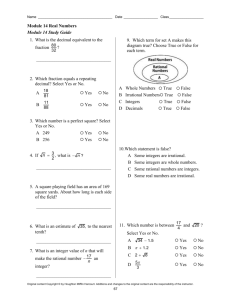Real Number System: Worksheet & Classification Guide
advertisement
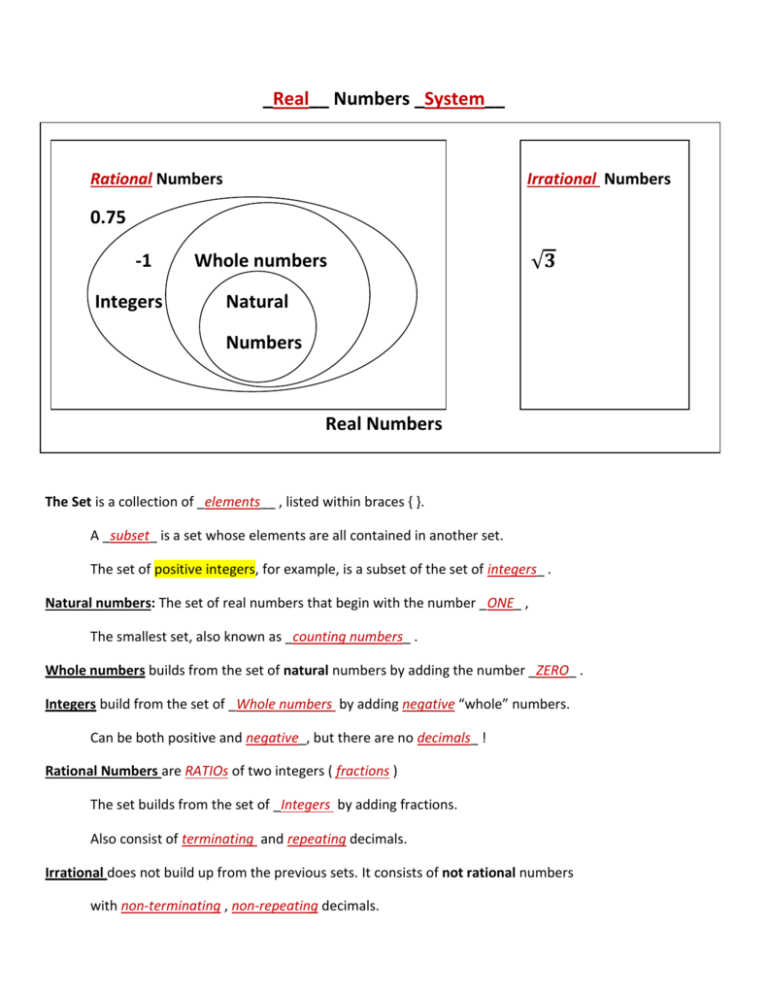
_Real__ Numbers _System__
Rational Numbers
Irrational Numbers
0.75
-1
Integers
Whole numbers
Natural
Numbers
Real Numbers
The Set is a collection of _elements__ , listed within braces { }.
A _subset_ is a set whose elements are all contained in another set.
The set of positive integers, for example, is a subset of the set of integers_ .
Natural numbers: The set of real numbers that begin with the number _ONE_ ,
The smallest set, also known as _counting numbers_ .
Whole numbers builds from the set of natural numbers by adding the number _ZERO_ .
Integers build from the set of _Whole numbers by adding negative “whole” numbers.
Can be both positive and negative_, but there are no decimals_ !
Rational Numbers are RATIOs of two integers ( fractions )
The set builds from the set of _Integers by adding fractions.
Also consist of terminating and repeating decimals.
Irrational does not build up from the previous sets. It consists of not rational numbers
with non-terminating , non-repeating decimals.
First, SIMPLIFY,
then ANALYZE parts of the number:
If my number…
has
NO decimal part,
NO negative sign
It is NOT zero
has
NO decimal part,
NO negative sign,
has
NO decimal part,
has
DECIMAL PART
has
DECIMAL PART
Is NEGATIVE
Ratio,
Terminating Decimal
Repeating Decimal
Non-terminating,
Rational
Irrational
is ZERO (0)
Non- Repeating
Then start from…
Natural
Whole
Integers
Then move toward REAL Numbers Sign (skip Irrational after Rational).
Choose the starting point, and then move toward Real Sign
Example
Natural
Whole
Integer
(counting
numbers:
1, 2, 3, …)
(and ZERO)
(and
negatives)
Choose only one:
Rational
Irrational
(AND repeating
or terminating,
decimal part)
NO DECIMAL PART
0
5
-9
=5
√
√
√
√
√
Real
(all of
them)
(OR non-terminating,
non-repeating
decimal part)
DECIMAL PART
√
√
√
√
√
√
√
√
√
√
√
√
√
√
√
√
0.141414…
0.010110111…
√
√
√
√
Name all sets of numbers to which each real number belongs.
1) 30 N, W, Z, Q, R
2) – 11 Z, Q, R
3) 5
Q, R
4)
5) 0
6)
7)
N, W, Z, Q, R
8)
W, Z, Q, R
Z, Q, R
I, R
I, R



